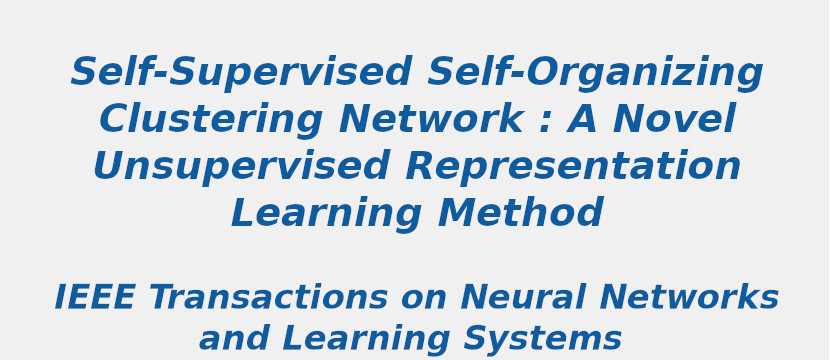Research Area: Machine Learning
Deep learning-based clustering methods usually regard feature extraction and feature clustering as two independent steps. In this way, the features of all images need to be extracted before feature clustering, which consumes a lot of calculation. Inspired by the self-organizing map network, a self-supervised self-organizing clustering network (S 3 OCNet) is proposed to jointly learn feature extraction and feature clustering, thus realizing a single-stage clustering method. In order to achieve joint learning, we propose a self-organizing clustering header (SOCH), which takes the weight of the self-organizing layer as the cluster centers, and the output of the self-organizing layer as the similarities between the feature and the cluster centers. In order to optimize our network, we first convert the similarities into probabilities which represents a soft cluster assignment, and then we obtain a target for self-supervised learning by transforming the soft cluster assignment into a hard cluster assignment, and finally we jointly optimize backbone and SOCH. By setting different feature dimensions, a Multilayer SOCHs strategy is further proposed by cascading SOCHs. This strategy achieves clustering features in multiple clustering spaces. S 3 OCNet is evaluated on widely used image classification benchmarks such as Canadian Institute For Advanced Research (CIFAR)-10, CIFAR-100, Self-Taught Learning (STL)-10, and Tiny ImageNet. Experimental results show that our method significant improvement over other related methods. The visualization of features and images shows that our method can achieve good clustering results.
Keywords:
Feature extraction
Clustering algorithms
Representation learning
Training
Self-organizing feature maps
Clustering methods
Computer vision
Author(s) Name: Shuo Li,Fang Liu,Licheng Jiao
Journal name: IEEE Transactions on Neural Networks and Learning Systems
Conferrence name:
Publisher name: IEEE
DOI: 10.1109/TNNLS.2022.3185638
Volume Information:
